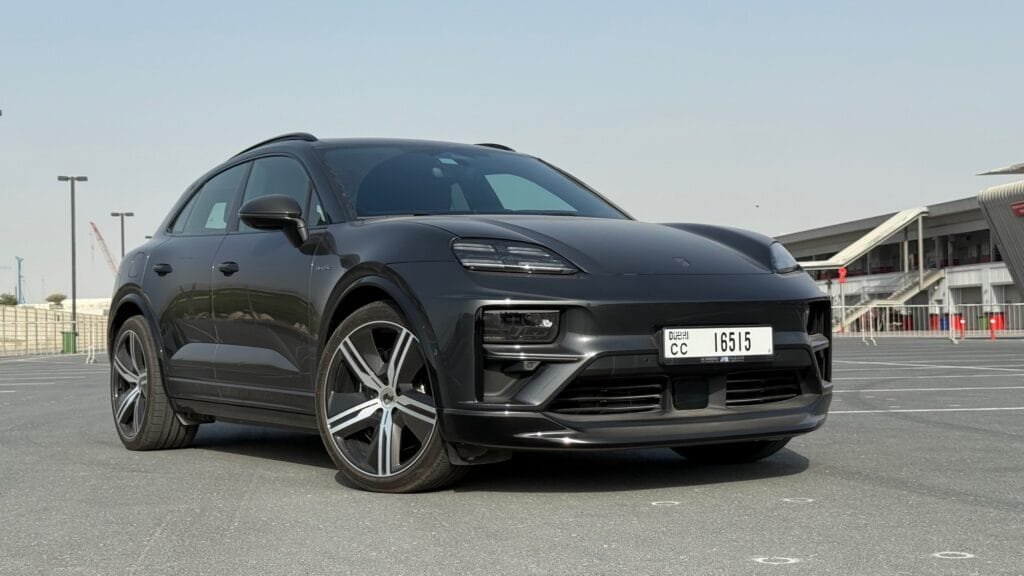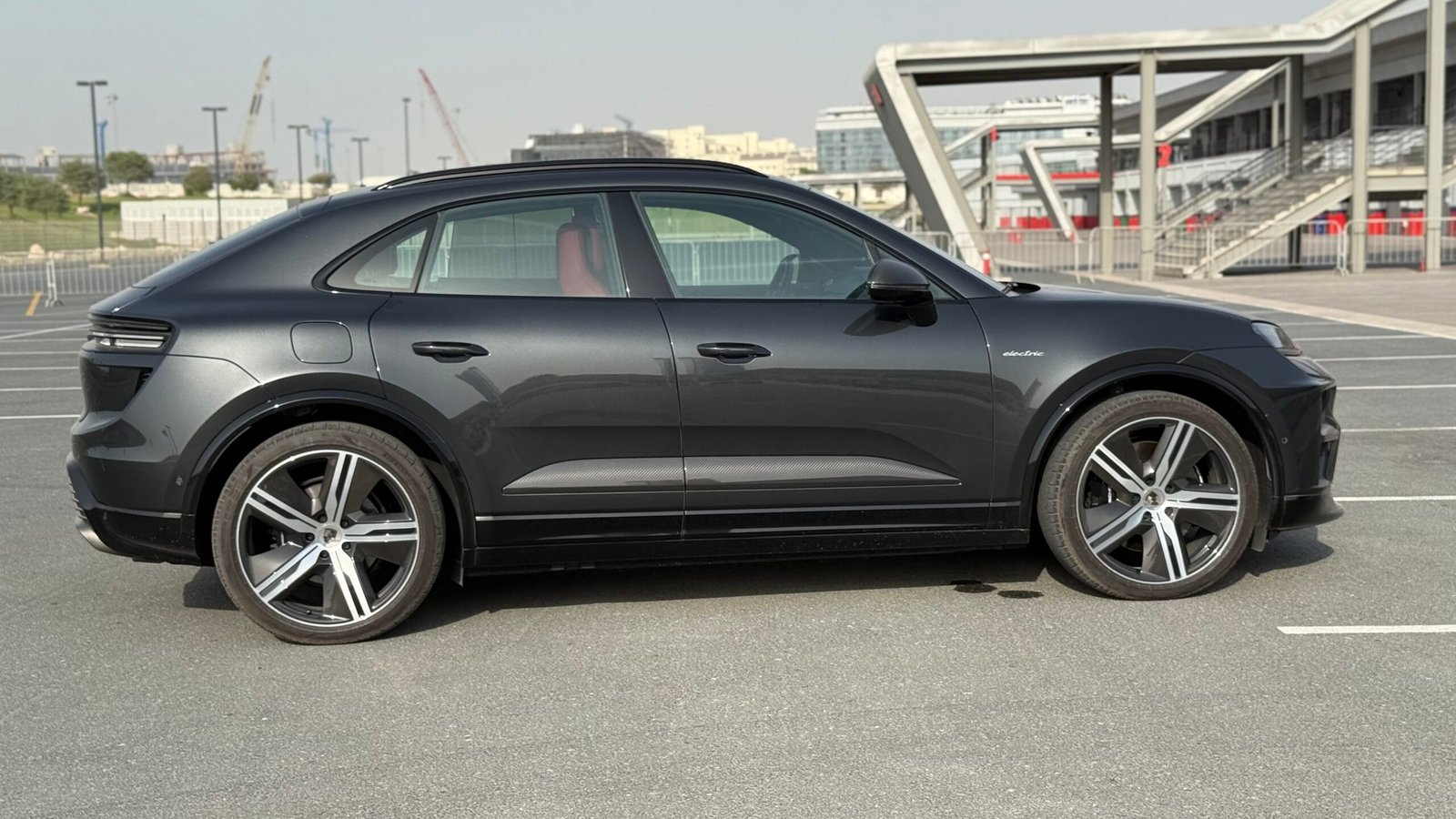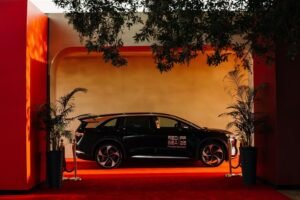Porsche has taken its best-selling Macan into the electric era. Ten years after the ICE Macan’s debut, the 2025 Porsche Macan Turbo EV enters service as “Porsche’s second all-electric model”. The line-up includes a base Macan 4 and a range-topping Macan Turbo EV, which delivers up to 470 kW (630 hp) and 833 lb-ft of torque. With Launch Control, the Turbo EV sprints from 0–60 mph in just 3.1 seconds, and hits a top speed of 161 mph – figures that outclass most conventional Porsche SUVs. Porsche calls the new Macan’s design “progressive [and] timeless,” blending the familiar sloping roof and muscular fenders of the Macan with clean EV details (full-width LED tail light, aerodynamically smoothed front end). This all-electric Macan not only preserves Porsche’s sports-car heritage, but also advances the brand’s ambitious electrification roadmap, where EVs are to account for ~80% of sales by 2030 .
Powertrain and Performance
The Macan Turbo EV uses dual permanent-magnet motors (one on each axle) for instant all-wheel-drive traction. In overboost mode it puts out 470 kW (630 hp) and a massive 833 lb-ft of torque. (By comparison, the base Macan 4 AWD has up to 300 kW/402 hp and 479 lb-ft.) Porsche’s Traction Management system (an electric AWD controller) reacts about five times faster than a normal AWD unit, instantly shuffling torque to any wheel that slips. Traction and cornering are also aided by Porsche Torque Vectoring Plus (an electronic rear differential lock standard on the Turbo) and optional rear-axle steering (first time on a Macan). Air suspension and dual-valve PASM dampers are standard, with aggressive Sport modes that deliver 911-like agility. In short, even though the EV Macan weighs ~400 kg more than the old gasoline Macan, its center of gravity is 140 mm lower and its chassis tuning yields a “cohesive whole” that “has the hallmark of a Porsche” in feel .
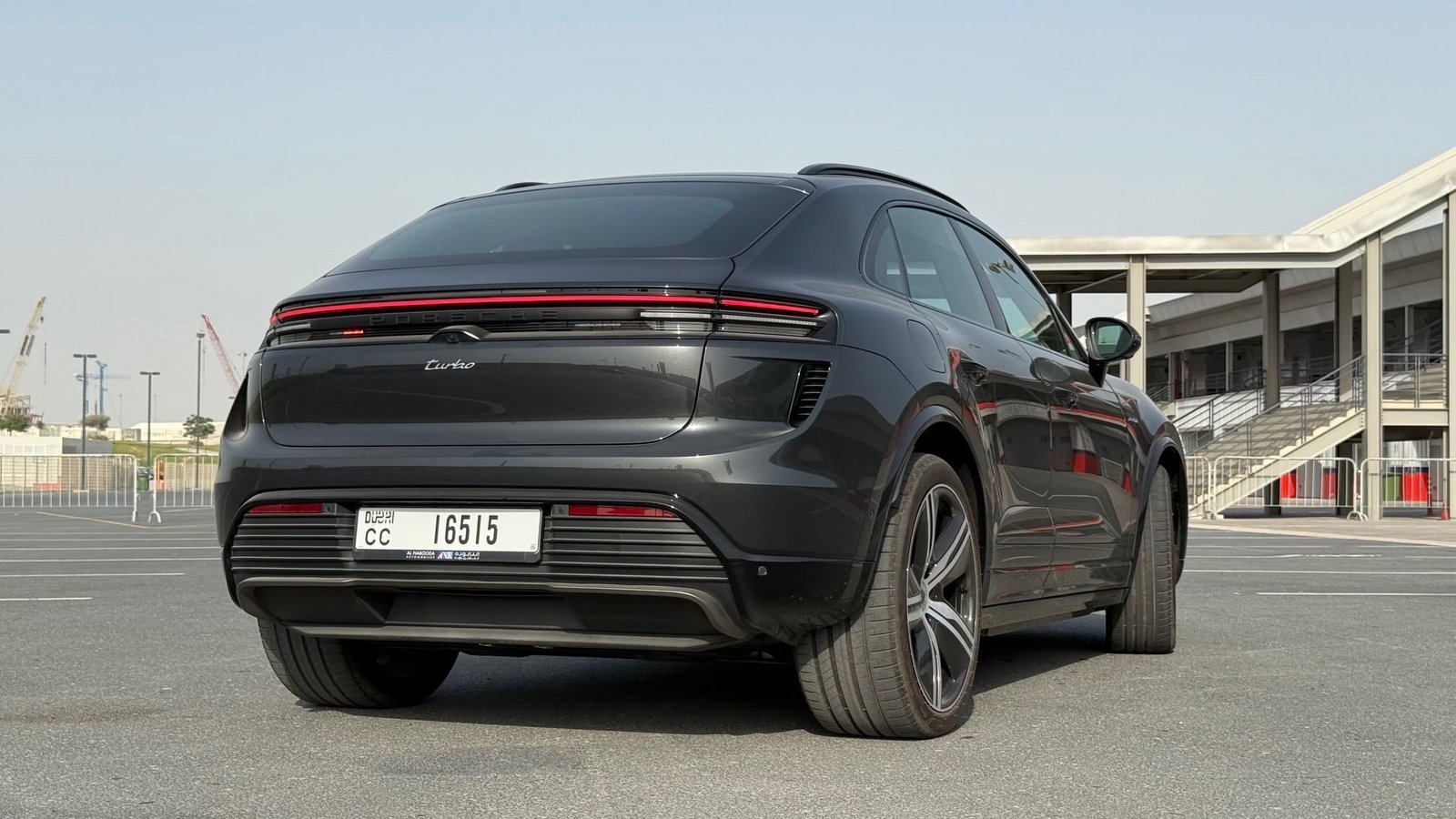
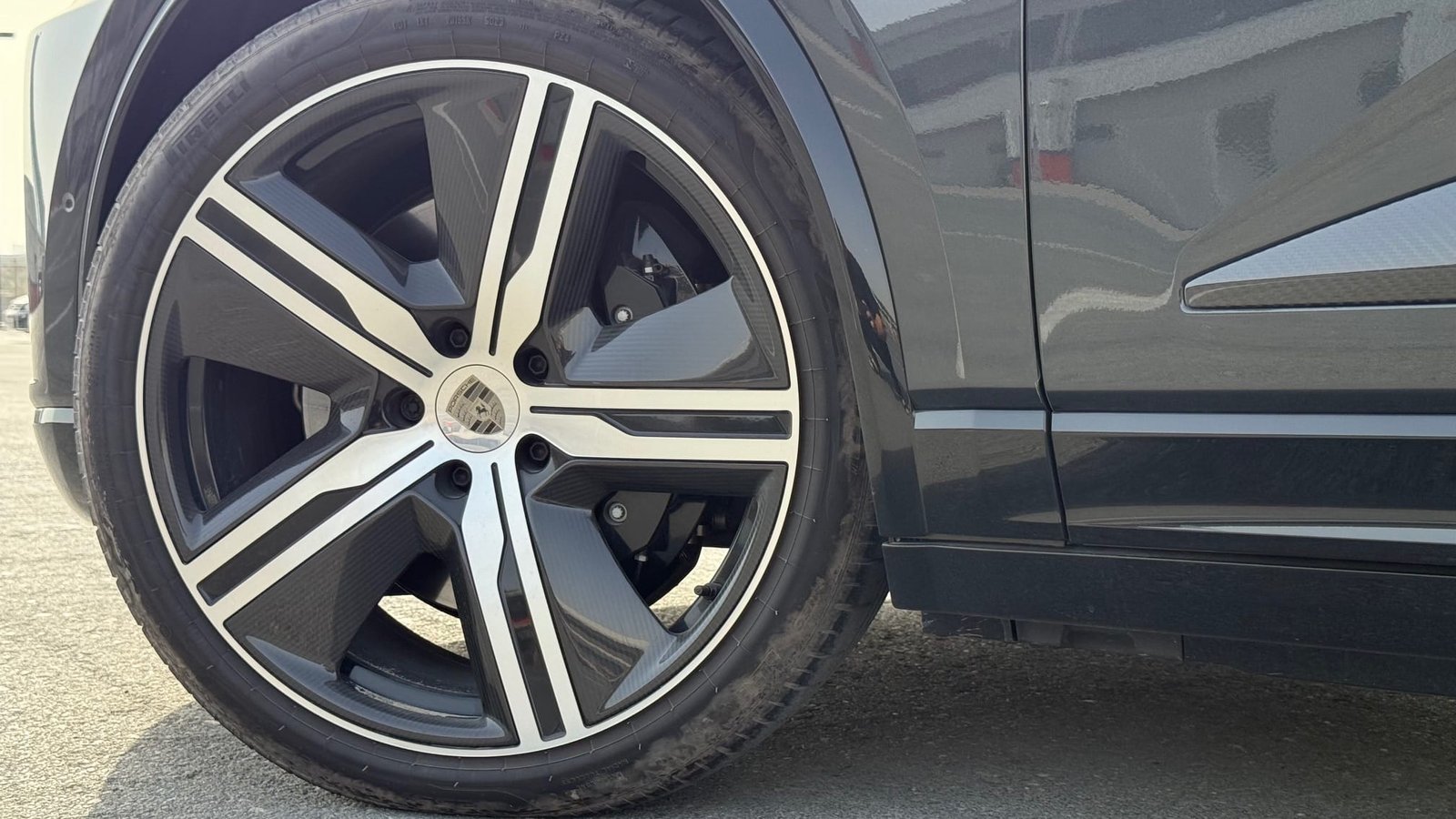
Battery, Range, and Charging
The Macan EV rides on VW’s new PPE (Premium Platform Electric) with an 800-volt architecture and a large lithium-ion battery under the floor. The pack’s gross energy is 100 kWh (about 95 kWh usable). Porsche has not yet published U.S. EPA range numbers, but estimates and tests suggest well over 300 miles on a charge. In fact, a pre-production Macan EV logged 300+ miles in a steady-70 mph range run. European WLTP ratings are even higher: up to 380 miles for the Macan 4 and 367 miles for the Turbo. Charge rates are very fast thanks to 800 V. The Macan can take up to 270 kW DC (10–80% in ~21 minutes). Even on older 400 V chargers it can split its pack to hit ~135 kW without an extra booster. At home, AC charging up to 11 kW is possible. Regenerative braking also recovers up to 240 kW, further extending range on long trips. Overall, Porsche’s high-voltage battery and ultrafast charging mean “range anxiety is non-existent,” even in this high-performance SUV.
Interior Technology and Comfort
Inside, the Macan EV blends modern digital tech with classic Porsche cues. The cockpit uses the latest Porsche Communication Management (PCM) and is organized much like the revised Cayenne’s interior . It features a freestanding 12.6‑inch curved instrument cluster in front of the driver, plus a 10.9‑inch center touchscreen. For the first time Porsche also offers an optional 10.9‑inch passenger display, so front-seat guests can browse apps or even stream video (driver distraction is blocked) . All three screens run a new Android Automotive–based system with Google-derived graphics. There’s also a heads-up display with augmented reality—navigation arrows and alerts projected 10 m ahead on the windshield . Voice control (“Hey Porsche”) can suggest routes with charging stops in seconds , and an in-car App Center lets you install third-party apps on the fly.
Practicality is high: the EV Macan gains storage thanks to its flat floor. Luggage space behind the rear seats is up to 18.0 cu ft (up by ~4.4 cu ft), and there’s a 2.9 cu ft frunk under the hood. Folding the rear seats expands total cargo to about 46.5 cu ft. The towing capacity remains 4,409 lbs. Ergonomics emphasize sportiness: the driver and passenger sit about 1.1″ lower than before for a “low and performance-focused” posture. Cabin materials are very high quality, with an “unmistakably Porsche” design where a single black panel sweeps across the dash. Physical controls (for vents and HVAC knobs) add tactile feedback amid the digital displays. Ambient LED light strips integrated into the dash and doors can glow for ambience or flash warnings (charging status, system alerts). In keeping with Porsche’s sustainability push, buyers can choose leather-free seats and optional recycled trim. For example, the floor mats and carpet use Econyl® (regenerated nylon) and other recycled materials.
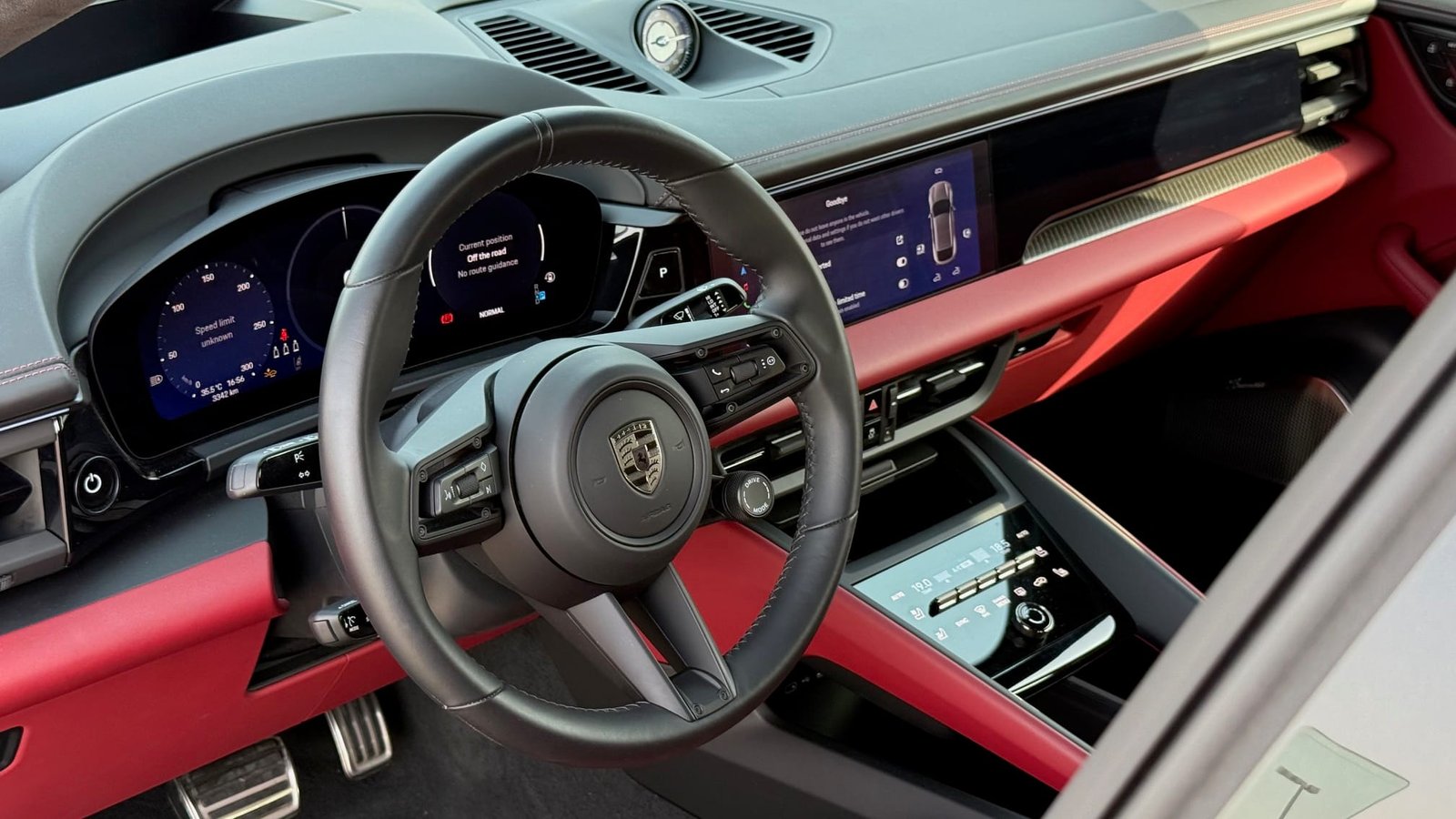
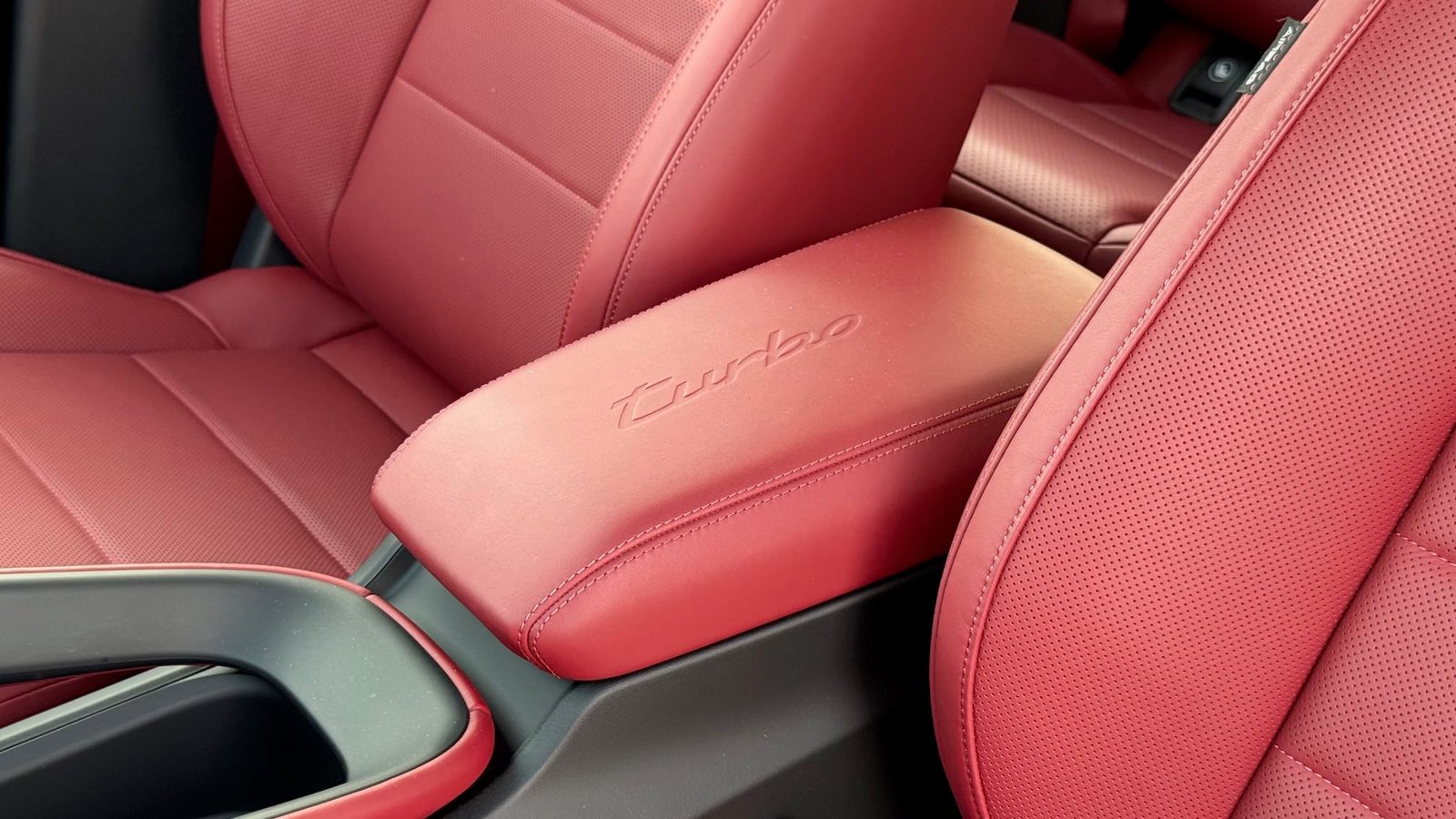
On the safety front, the Macan Turbo EV comes with a full ADAS suite. Standard features include automatic emergency braking with pedestrian detection and lane-departure/lane-keep assist. An adaptive cruise-control system is available, and Porsche’s Night Vision and surround-view cameras are offered. (Porsche’s press materials emphasize the driving experience over autonomy, but expect level-2 highway assist as in other recent Porsches.)
Exterior design of the all-electric Porsche Macan Turbo EV
The new Macan EV retains the classic fastback-SUV profile of its ICE predecessor, with a sloped roof, pronounced shoulders and wide track that give it a muscular sports-car posture. Its front fascia is smoother and more aerodynamic, but still marked by Porsche’s signature four-point LED headlights and wide apron. At the rear, a continuous LED light bar echoes that of the Taycan and Panamera. Porsche calls this look “progressive [and] timeless”, signaling that the electric Macan is both a true Porsche and a bold new direction for the model line. Inside, the Macan EV’s design pulls from Porsche’s current playbook: a clean, driver-centric dash reminiscent of the Cayenne/Taycan cabin, a rising center console, and those special touches like analog switches on the vents. A longer wheelbase (up ~96 mm) also frees up more rear-legroom than the old Macan, even as the front seats can be slid very low like in a 911 to reinforce the sports-car feeling .
Building on Taycan and Porsche’s EV Roadmap
The Macan Turbo EV rides on Porsche’s new PPE platform (Premium Platform Electric), a joint VW Group architecture co-developed with Audi. It’s the first PPE-based Porsche (the Taycan uses a different J1 platform). PPE’s 800-volt system and high-power motors owe much to the Taycan program, but scaled for an SUV. In fact, Porsche has already announced that the upcoming electric Cayenne will use PPE . This shared platform strategy is crucial for Porsche: the ICE Macan and Cayenne together have been half of Porsche’s sales, so electrifying them together is key to meeting Porsche’s 80% EV-by-2030 target . As Jörg Kerner, head of Macan development, notes: the new Macan “takes a very successful SUV to a new level” with EV technology. In practice, the Macan EV continues the Taycan’s emphasis on performance through technology. For example, all motors in the Macan EV are placed behind their axle centers (a 911-inspired layout) , biasing weight rearward for more playful handling – a feature Taycan enthusiasts will recognize.
From a sustainability perspective, Porsche leverages the Macan EV’s EV status and materials to reduce environmental impact. Its large battery and 800V system maximize electric efficiency, and strong regenerative braking recovers much of the vehicle’s kinetic energy. Inside, the use of recycled and non-animal materials (e.g. Econyl carpets) helps lower the ecological footprint of the cabin. Overall, Porsche’s strategy is to demonstrate that sustainability and high performance can coexist: the Macan Turbo EV can offer track-like acceleration and handling while producing zero tailpipe emissions and using greener interior components. This aligns with Porsche’s broader electrification vision, from the Taycan sports sedan to future EV Cayennes and potentially even an electric 911 one day.
Comparison with Rivals
In its segment of sporty electric SUVs, the Macan Turbo EV faces strong competition:
- Tesla Model Y Performance – The $66k Y Performance is lighter and cheaper than the Macan, but is outgunned by Porsche. The dual-motor Y P delivers about 456 hp (estimated) and runs 0–60 in ~3.5 s. Its EPA range is roughly 285 miles, thanks to a ~75 kWh usable battery. By contrast, the Macan Turbo EV packs a 95 kWh usable battery and is expected to exceed 300 miles, although real EPA figures are pending. An InsideEVs comparison notes that the two SUVs are “almost identical in size” but the Macan is marginally bigger with a larger battery and a more luxurious, higher-quality interior. In practice, the Model Y offers Tesla’s minimalist cabin and Autopilot features, while the Macan delivers classic Porsche build quality and sharper handling. If anything, Model Y buyers sacrifice some luxury and brand cachet for Tesla’s range advantage and price.
- BMW iX xDrive50 – BMW’s electric SUV is taller and more comfort-oriented. The xDrive50 model makes 516 hp and does 0–60 in 4.4 s , slower than the Macan Turbo but still quick. Its EPA range is about 307–309 miles on the BMW’s 111.5 kWh battery. The iX interior is distinctively minimalist with a panoramic curved display, but it is larger and heavier (over 5,500 lbs) and rides more softly. Base price is lower – about $87,250 vs the Macan Turbo’s $105,300 – though the Macan’s performance capability is much higher. In short, the iX is a tech-rich luxury cruiser, whereas the Macan EV is tuned for more dynamic driving.
- Audi Q6 e-tron (SQ6) – Closest in DNA, Audi’s new Q6 SUV (on the same PPE platform) comes in up to the SQ6 performance version. The SQ6 e-tron packs 483 hp (boosting to 510 hp with Launch Control) and hits 0–60 mph in about 3.8–4.1 s . Its real-world range is similar – roughly 480 km (~298 mi) – using a 100 kWh battery. Styling is more subdued and squared-off than the Porsche’s, reflecting Audi’s elegant luxury ethos. Audi cabins are also top-quality (Nappa leather, OLED light patterns), but Porsche’s tends to be more driver-focused (lower seating position, racing-inspired seats). Brand-wise, Audi carries prestige, but Porsche is often perceived as more performance-oriented. In any case, both the Macan Turbo EV and SQ6 offer high power and advanced features; the Porsche wins on outright acceleration and steering feel, while the Audi may appeal with its tech-laden interior and slightly higher range.
The table below summarizes key specs for the Macan Turbo EV and its rivals:
| Model | Powertrain / Power | 0–60 mph | EPA Range (miles) |
| 2024 Porsche Macan EV Turbo | Dual-motor AWD – 630 hp, 833 lb·ft | 3.1 s | ~300 mi (est.) |
| 2024 Tesla Model Y P | Dual-motor AWD – 456 hp (est.) | ~3.5 s | 285 mi |
| 2025 BMW iX xDrive50 | Dual-motor AWD – 516 hp | 4.4 s | 307–309 mi |
| 2025 Audi SQ6 e-tron | Dual-motor AWD – 483 hp | 4.1 s | ~298 mi |
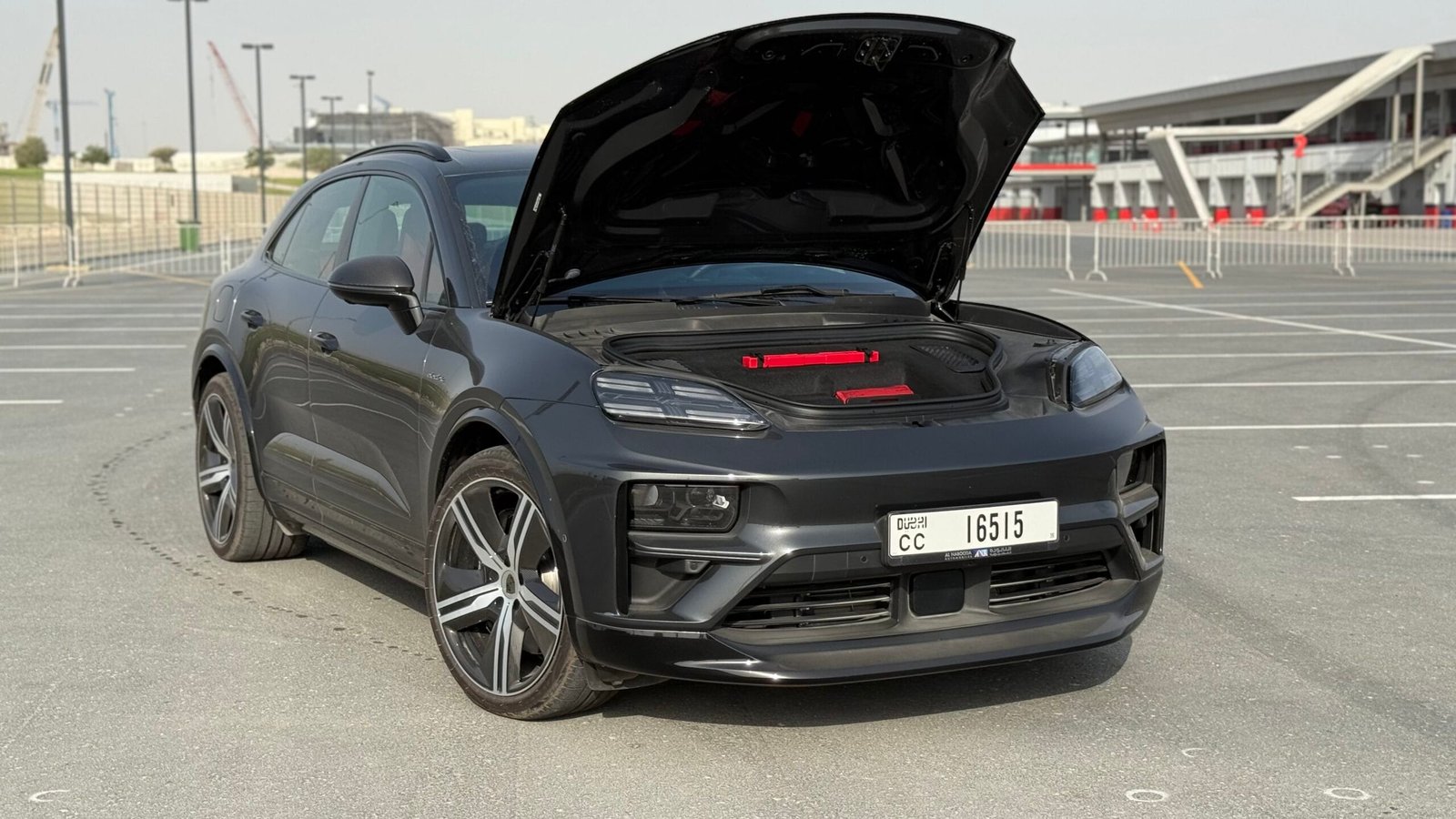
Porsche Macan Turbo EV
Sustainability and Porsche’s Vision
The Macan Turbo EV exemplifies Porsche’s strategy of “E-Performance” – high efficiency paired with sports-car capability. Its electrified powertrain produces zero tailpipe emissions, and regenerative braking and the 800 V system optimize energy use. On board, the focus on sustainable materials is clear: Porsche offers leather-free interiors and uses recycled fabrics (Econyl nylon, recycled polyester) for carpets and trim. Porsche has also integrated efficiency into every system (e.g. the compact Integrated Power Box combining charger, heater and DC/DC converter to save weight).
Above all, Porsche demonstrates that electrification need not come at the expense of driving excitement. Reviewers note that the Macan Turbo EV “delivers a real sports-car feeling” with its crisp steering and acceleration . Even as an EV, the Macan stays true to its heritage: powerful, dynamic and premium. With its mix of breakthrough EV technology and Porsche DNA, the 2024 Macan Turbo EV marks an important step in Porsche’s electric roadmap – showing that the next generation of sustainable vehicles can still thrill behind the wheel.

